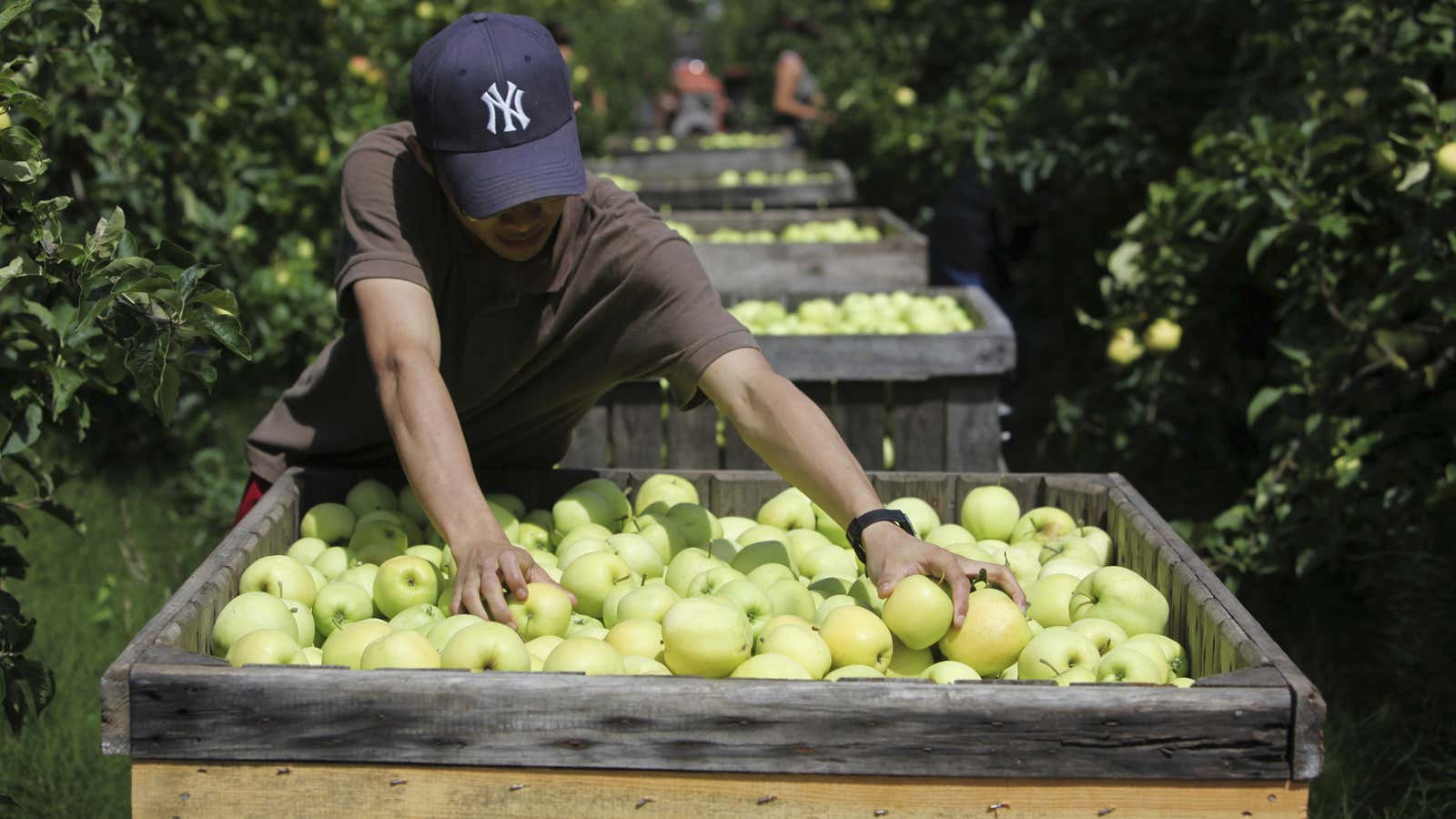In March, EU food safety authorities effectively blocked US non-organic apples from import by lowering the amount of diphenylamine (DPA) that the apples can contain.
The EU banned its own farmers from using DPA, a growth-regulating chemical that could be be linked to cancer, back in 2012, but it is still permitted and used widely in the US and Canada.
This isn’t a big issue trade-wise; only 2% of US apple exports go to the EU. However, the news is prompting Americans to wonder if their apples are hazardous. Pressure on the US’s Environmental Protection Agency (EPA) to toughen up its stance is reportedly building among US consumers.
Beyond that, the apple controversy has raised the alarming possibility that US regulators don’t have enough information to make an informed decision and—at least according to a report by a consumer health non-profit called Environmental Working Group (EWG)—don’t seem all that motivated to learn more.
It’s pretty clear that DPA itself doesn’t cause cancer. But that’s not what the European Commission was worried about. When DPA breaks down and combines with nitrogen, it might form nitrosamines, a family of chemicals that cause cancer in lab rats and have been associated with esophageal and stomach cancer in humans (pdf). The possible presence of nitrosamines was the sticking point for the European Commission. An EC task force on DPA couldn’t find any compelling evidence that DPA didn’t form nitrosamines, which prompted the EU-wide 2012 ban.
It now allows DPA concentrations of 0.1 part per million (ppm) on foods. There’s a pretty large disparity between what the EC deems safe and what the US does; the EPA permits 100 times more, or 10 ppm. A 2010 government study found DPA on 83% of raw apples tested (pdf, Appendix K. p.1), with an average level of .43 ppm. That means while US apples aren’t anywhere close to meeting EC standards, they’re well within US standards.
But the research those standards is based on is probably due for an update. The last time the EPA analyzed DPA was back in April 1998, when it classified the chemical as “not likely” to be carcinogenic (pdf, p.22) to humans, based on two studies.
EPA hasn’t updated its research (pdf) since 1998, says the EWG. And because federal law requires the EPA to conduct a scientific assessment of pesticides—a category that includes DPA—every 15 years, that means it’s now a year late.
It’s worth noting that the EWG is a controversial group (for a rundown, see these articles by a fruit industry association and some industry affiliates). But its main point here is pretty unassailable: The EPA should be testing how dangerous DPA might be. After all, it’s the law.





